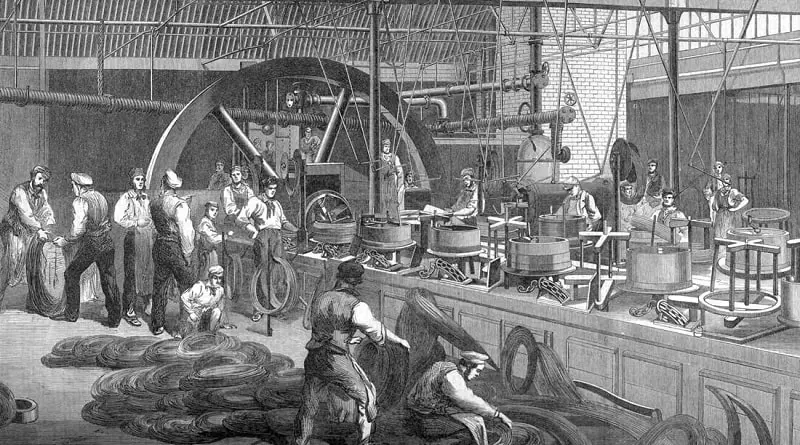The History of First Wire , ORDINARY wire was invented about 2,000 years ago. In 1873 Joseph Glidden, an American farmer, invented barbed wire similar to that in use today. But some other Americans produced primitive forms earlier; the first was probably L B Smith of Ohio in 1867. Before the invention and general use of barbed wire, American farmers had to invest as much money in fencing as in livestock. Cowboys saw it as a threat to their occupation. Opposition to its use led to fence-cutting wars in Texas, Wyoming and New Mexico, but the use of barbed wire spread across the plains of America and the stock-farmer replaced the rancher.
Humphrey Phelps, Westbury-on-Severn, Gloucs.
BARBED wire was welcomed by the ranchers of the American West for a number of reasons: wire fences were less likely to be trampled by the herds than were wooden ones (impractical anyway on the treeless range); open-range farming, the only alternative, required the presence of an army of cowhands; herds enclosed by the new fences could be watered from a single well and grazed more effectively; breeding animals could be more carefully controlled, thus upgrading the standards of the stock; and, finally, the ranchers could establish a powerful claim to huge tracts of land for which they had previously had to compete with smaller-scale farmers, growing urban areas and federal government. The tensions thus created led in several instances to violence and loss of life, till President Grover Cleveland was obliged to send in the army to remove unlawful fences.
FIERCE controversy surrounded the invention of wire, which, according to Thomas Malham, was invented by him in 1830 at his foundry in Sheffield. Similar claims were made by a number of other foundry proprietors around that time, although claims by the Frenchman, Jean Fran cois Martin, generated the most heated debate, culminating in legal action contesting his right to patent. The matter was never resolved, since Thomas Malham died of ‘an inflamed liver’ in 1832. His memorial, in Abney Park Cemetery, North London, although now rusted away, was constructed entirely of wire and took the shape of an anvil topped by a falcon. This information, and more, is available in Wire, Its History and Application, by Dr A. Stone.
- THE ANSWER above is manifest nonsense. Soft metals (copper, silver, gold) were processed into wire at least as early as Pharaonic Egypt. I must presume you mean drawn iron wire. But this was achieved about 1450 in Augsburg.







